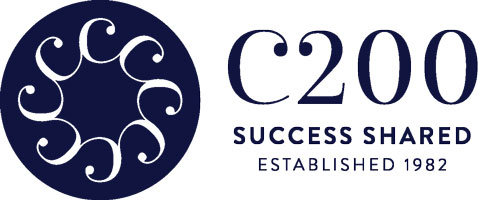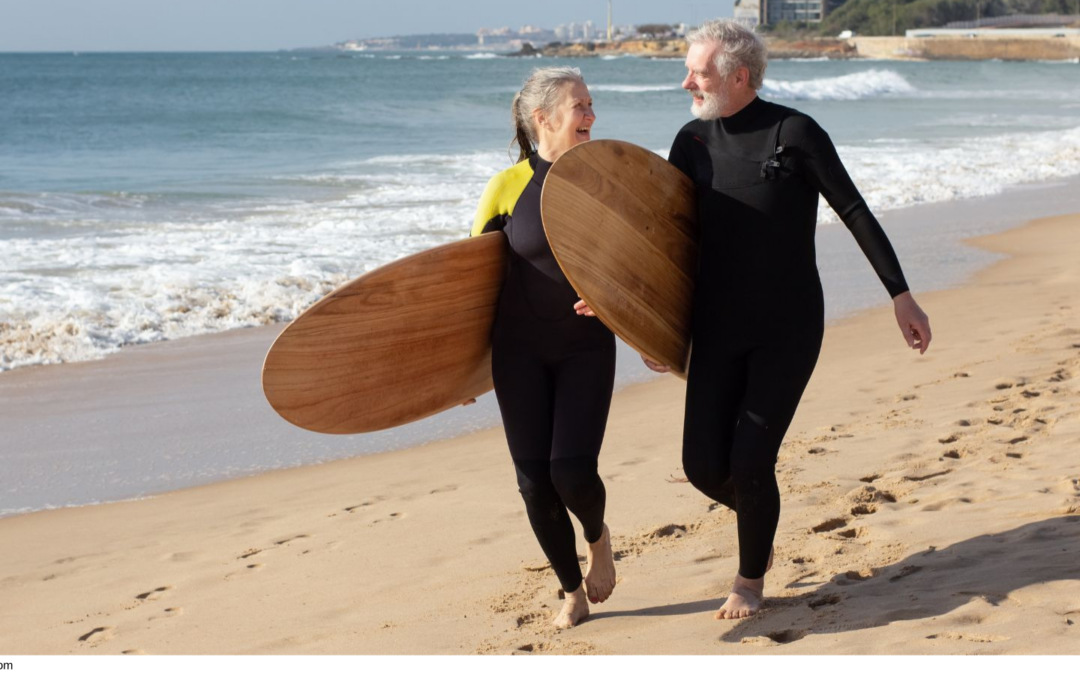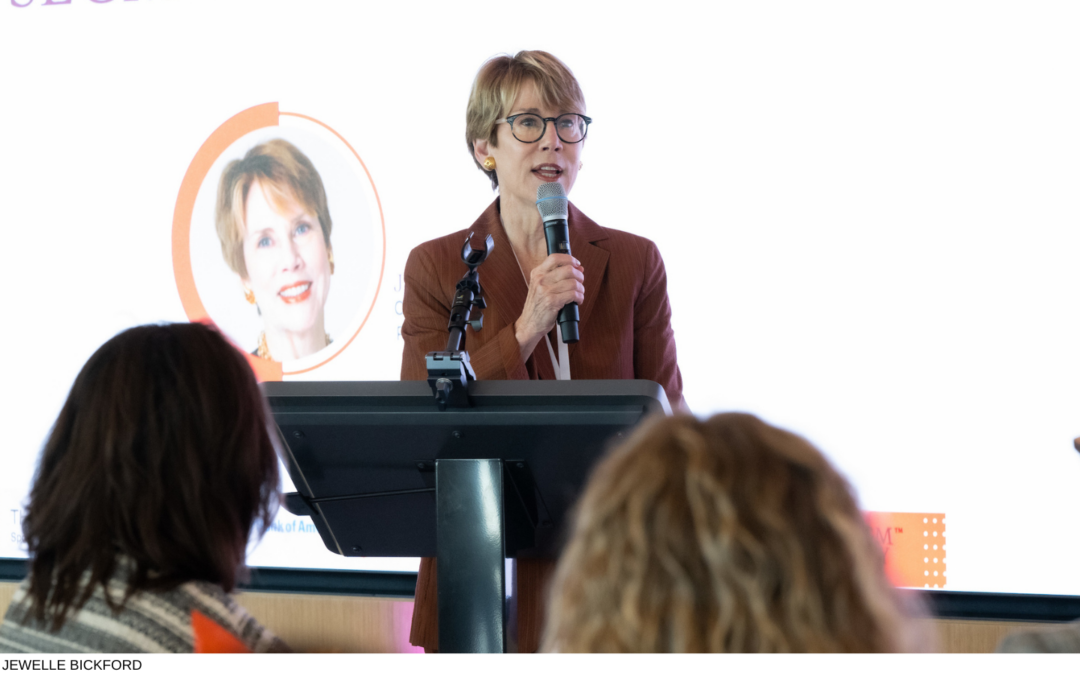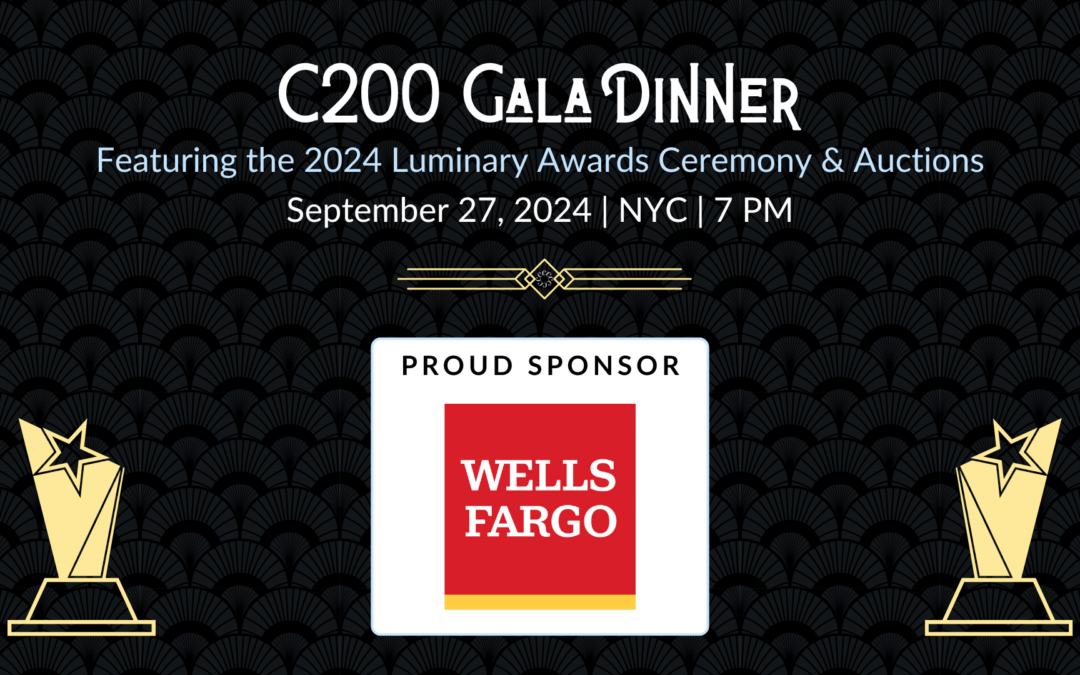
by Eva Glassman | Sep 19, 2024 | Blog, Featured
C200 is thrilled to announce that Wells Fargo Commercial Banking is a proud sponsor of the 2024 C200 Luminary Awards & Gala Dinner, which takes place on Friday, September 27th in New York City during our 2024 Annual Conference.
The 2024 C200 Luminary Awards & Gala Dinner will be an evening dedicated to bringing our community of members and allies together to celebrate the accomplishments of women in business while paying it forward to the next generation of women leaders. The evening is the largest opportunity for the C200 community to gather in support of our mission to inspire, educate, support, and advance current and future women entrepreneurs and corporate, profit-center leaders, which is why we are grateful for Wells Fargo’s generous support of our Luminary Awards & Gala Dinner.
“Wells Fargo does incredible, future-oriented work in supporting businesses and communities nationally and internationally,” says Myla Skinner, CEO of C200. “Their efforts align strongly with C200’s vision to profoundly impact and celebrate the advancement of women worldwide by changing the face of business, one woman at a time. C200 is excited to work towards a brighter future together with Wells Fargo through this sponsorship.”
Wells Fargo is committed to working with women-owned and -led middle market businesses, helping to provide access to capital and Wells Fargo resources to fuel their growth and individual wealth building needs, in addition to creating partnerships, insights, and educational programs that prospects and clients value.
“According to the 2024 Wells Fargo Impact of Women-Owned Business Report, women-business owners make up 39.1% of all U.S. businesses,” said Ruth Jacks, Head of Wells Fargo Commercial Banking’s Diverse Segments team. “Women-owned businesses drive inclusion, innovation, and economic growth. Their impact is undeniable, and it’s an honor to help celebrate the accomplishments of some of the most successful business leaders of today.”
Wells Fargo’s support of our 2024 Luminary Awards Ceremony and commitment to creating better outcomes for more sustainable and inclusive communities aligns with our mission to advance women in business, and we look forward to what we will achieve through this partnership.
You can learn more about C200’s mission, membership, and Advancing Women Programs here: www.c200.org
News, insights, and perspectives from Wells Fargo are also available at Wells Fargo Stories.
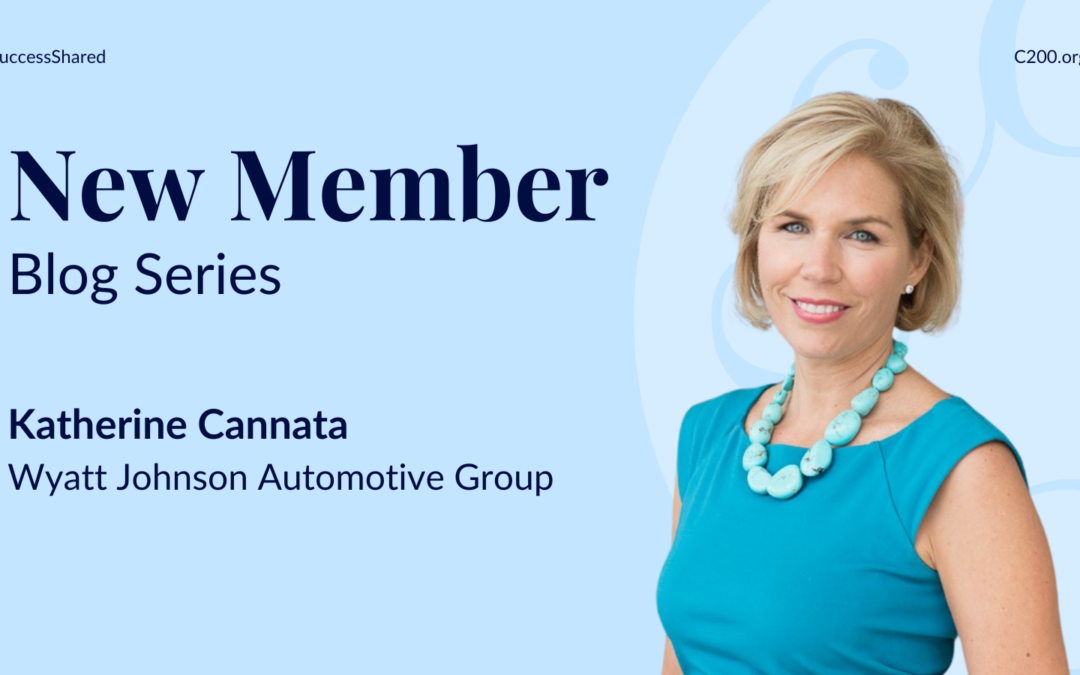
by Eva Glassman | Sep 12, 2024 | Blog, Featured
Katherine Cannata serves as the Dealer Principal of Wyatt Johnson Automotive Group, which encompasses brands Buick, GMC, Hyundai, Subaru, Mazda, Toyota, Kia, and Volkswagen. The dealerships sell over 11,000 new and pre-owned vehicles annually. Katherine’s background in accounting has provided her with a unique insight that has been instrumental in the growth of Wyatt Johnson. She emphasizes the importance of “choosing your own meaning,” a mindset she believes is crucial for achieving success in any workplace. Outside of her professional life, Katherine enjoys spending quality time with her adult children, indulging in her love of reading, and supporting her husband at golf tournaments. A member of C200 since February 2024, Katherine is excited to engage with a community of dynamic women leaders.
Eva Glassman: What does it mean to be the Dealer Principal at Wyatt Johnson? What do you enjoy most about your work, and what are its biggest challenges?
Katherine Cannata: In the automotive industry, the term “Dealer Principal” equates to being the CEO of the dealership. At Wyatt Johnson, we not only sell and buy cars but also offer vehicle servicing and parts sales. We sell roughly 1,000 vehicles monthly.
I don’t view my role as a job per se. I lead an incredible team, and witnessing their development is my favorite aspect of my work. We focus on a culture of growth; out of five hundred employees, 65 of our 66 managers were promoted from within the company.
Navigating the pandemic was one of my recent challenges. We faced unique inventory shortages during COVID, a situation that was unfamiliar to our industry. Finding automotive technicians is also becoming more and more important in our industry.
EG: Your background is in accounting. How has that influenced your career? Did you envision this path when you started?
KC: I didn’t initially plan on pursuing accounting when I began college at UT Knoxville. It was through a conversation with a business school professor that I became intrigued by the field. My early assumptions about accounting being dull faded away as I learned that professionals in this field often get opportunities to travel and engage with diverse CEOs and companies.
Discovering accounting opportunities was pivotal for me. After graduation, I spent seven years at Price Waterhouse in Atlanta and two years at Arthur Andersen. Working in public accounting instilled in me the values of hard work and financial literacy.
I also didn’t plan on joining the auto industry. However, when my husband and I moved from Atlanta to Nashville in 1999, my father asked if I would work at Wyatt Johnson. I was uncertain about working with family, but I decided to try it on a temporary basis. Within weeks, I was hooked. My accounting expertise enabled me to analyze our financial “scorecard,” illustrating the impact of our operations. This contribution helped the business grow, and I continue to apply my accounting skills daily.
EG: How did you become involved with C200, and what attracted you to the organization?
KC: Initially, I hesitated to commit to more activities due to my already full schedule. However, after attending a cocktail party at Nancy Peterson Hearn’s house over the holidays, I was inspired by the incredible women I met, many of whom are at similar stages in their careers. That event sparked my interest in joining C200. I appreciated hearing their stories and journeys, and I felt a strong connection.
EG: Given that the automotive industry has few women leaders, can you share your experiences with mentorship—both from women and in general? What has your father’s role been as a mentor?
KC: I’ve had several mentors and coaches throughout my career, including some remarkable women. My mother has been one of my greatest influences; she exemplifies a servant leadership style, while my father brought a business-savvy, decisive approach. I’ve combined both styles in my own leadership.
Professionally, I grew significantly at Price Waterhouse, who were notably tough, but that experience built my confidence. I’ve also attended numerous Tony Robbins events, which I believe are fantastic for personal growth.
EG: I recently came across your concept of the “glass slipper” instead of the “glass ceiling.” Could you elaborate on that? How can women facing gender bias reframe their perspectives?
KC: The way I see it is: you find what you’re looking for. I’ll find what I believe in my heart. Women do have advantages in business and in the workplace. I used to not think this way, but I changed my perspective and language.
Before I adopted this kind of thinking, early in my career with a young child, I felt like I had two families—one at work and one at home—and felt guilty for leaving one or the other. I left home and felt guilty for leaving my kids; I left work and felt guilty for leaving my colleagues. I developed this circle of guilt that held a lot of weight over my shoulders.
This was when one of my coaches said, “Change your language. Instead of feeling guilty, feel grateful. Be grateful you have outstanding support at home and that your kids are happy. Be grateful for your work community that supports you and wants you to have a great livelihood.” As soon as I changed my language from “guilty” to “grateful,” all the weight came off my shoulders. I was able to bring more energy to my work and home life. It taught me a big lesson—that you can choose your own meaning.
The “glass slipper” terminology emerged when I was preparing a presentation for a group of women college students. I wanted to instill in them the belief that business opportunities are everywhere, especially as women, and to be open to those opportunities. The media loves to use the term glass ceiling. However, that is damaging to our belief system. Women do have an advantage in the workplace as I’ve observed in the automotive industry. Companies thrive with a diverse range of viewpoints. I said to these women that we should start using the language “glass slipper” instead of “glass ceiling” for that reason. The glass slipper symbolizes the tremendous opportunity for women in all fields.
EG: That’s a powerful lesson. It’s essential to recognize the standards we choose to measure ourselves against, as finding personal meaning is critical to success.
KC: Absolutely! Today’s world, influenced by constant social media and news cycles, often detracts from our focus. I consciously engage with positive content on platforms like Instagram to maintain an uplifting perspective. Protecting our mental space is vital—choosing positivity is crucial for success.
EG: How do you unwind and enjoy your time outside of work?
KC: I enjoy attending hot yoga classes in Nashville, and since my husband is an accomplished golfer, I love watching him compete in tournaments. Travel is a passion; we enjoyed a memorable trip to the Amalfi Coast last year with our children. I also cherish reading—my book club provides a wonderful outlet for discussing fiction. Audiobooks are a favorite too, especially during commutes.
EG: What advice would you offer aspiring women business leaders, especially those hoping to one day join C200?
KC: Leadership is all about putting in the effort, staying committed, and learning from both your wins and your setbacks. It’s important to define your core values—they’ll help steer your decision-making.
If you’re aspiring to be a leader, my biggest tip is to be optimistic. Having a positive and energetic attitude not only sets you apart but also draws in like-minded people.
For those looking to join C200 in the future, remember that hard work is essential. A lot of people want success, but it’s the dedication and discipline that will really drive you toward your goals.
EG: Lastly, why C200?
KC: I’m really looking forward to building relationships with fellow members. I appreciate the opportunity to learn from those who have gone through similar journeys and to exchange insights that can help us all grow together. Connecting with ambitious women is going to be such a rewarding experience, and I can’t wait!
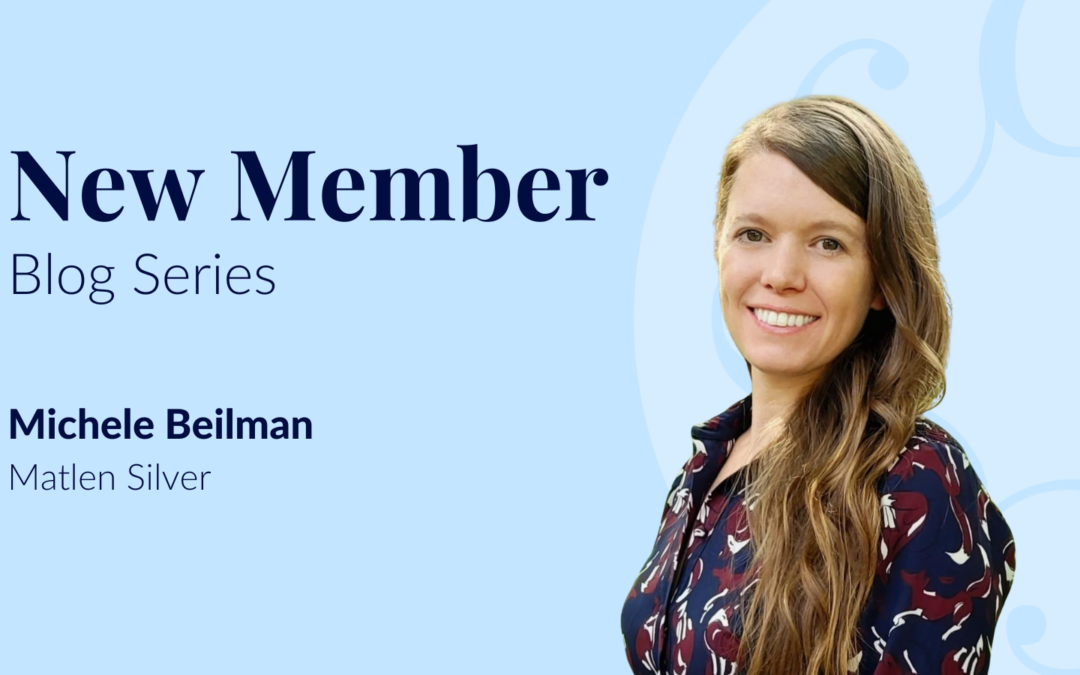
by Eva Glassman | Aug 27, 2024 | Blog, Featured
Michele Beilman is the CEO of Matlen Silver, one of the nation’s largest IT staffing and technology solutions company. Michele has worked at Matlen Silver for more than 10 years and credits her success, at least partially, to her strong work ethic. This is a trait embraced throughout company culture, as Matlen Silver often attributes business growth to their ability to “outwork” and “out maneuver” the competition. Michele is the mother of a young daughter, and as CEO and most recently as COO, she also knows that balance is key. Under her leadership, Matlen Silver recently introduced a comprehensive parental leave policy—a model program for the industry. Michele believes that no one should have to choose between career and their family, and her actions mirror her values. Outside of the office, Michele loves to paint, meditate, go for runs, and spend time with her family. Michele has been a C200 member since January 2024.
Eva Glassman: What’s your day to day like at Matlen Silver?
Michele Beilman: I believe that the role of a CEO, or any C-level executive, is foremost to be a service driven leader. I place a priority on people, and therefore I spend a large part of my day talking to colleagues, our clients, and respected industry associates. We are in the staffing business, but I imagine my role is not unlike most CEOs. I focus on building bonds with our employees and relationships with the leadership teams of our clients and prospective clients.
The staffing business is focused on problem-solving and providing solutions, while also being process driven in nature. That is not necessarily where the magic is; instead, it’s about being proactive on the front end of that cycle and managing complications on the back end. This is where I spend a great deal of my day as well: analyzing the job market, forecasting trends relative to our clients’ business needs, and making certain that they have access to our subject matter expertise in a way that is valuable to them. In short, I focus on making sure that Matlen Silver is showing up in the way that presents a competitive advantage for our clients in their respective businesses.
The other part of being an executive revolves around company culture. Everyone wants to be a “great place to work,” and we do, too. But I try to look beyond that “great place” criteria and partner with my leadership team to create an environment where our employees can do the “best work of their careers” with us at Matlen Silver.
EG: You’re the first woman CEO of the company and I also read that you established a paid parental leave policy at Matlen Silver. I’m curious what it’s been like to be the first woman in your position and how you feel like you’ve changed the company?
MB: Perspective. Prior to me being the CEO, I was the COO, and in both roles, I bring a different perspective to Matlen Silver based upon my experiences and my background. I believe in diversity of thought, and specifically that diversity of thought not only makes us collectively smarter, but more inherently aware, compassionate, and nimble to the action necessary to support the needs of colleagues and clients. Our parental leave policy is an example of awareness leading to action, as is our veteran’s program (The Valiant Workforce), and a few initiatives on the crux of being introduced.
I want to bring my perspective to our leadership meetings and surround myself with other perspectives that are different than mine. It is my job to cultivate the diversity of thought that will continue to drive our thoughtfulness, compassion, and agility. That may be targeted toward benefits and solutions for our workforce, or benefits and solutions for our clients. Both are wins for Matlen Silver.
One area of focus for me is a forward-thinking approach to work-life balance. I ask everyone to work hard, that is no secret, but I also encourage balance, and continually seek solutions, be they tools or policies, to help people do their best work of their career at Matlen Silver. That said, it was important to me that I established a plan that puts people and families first and provides whatever support we can to encourage people to grow both personally and professionally. It should never be a “this or that” situation; you should never have to choose between advancing your career or growing your family.
EG: I also read that you went to UNC Wilmington for your undergraduate. What did you study?
MB: I studied Studio Art—so not at all related to what I ended up doing for my career! [laughs] I loved art growing up; I painted a lot and got into ceramics as well. Nothing I’ve done in my career has been applicable to my major, but I still try to create art in my free time.
EG: I am even more curious about how you ended up where you are now in your career!
MB: I graduated college in 2009 and during the Great Recession, so there were very limited job options for me, especially if I wanted to utilize my major. I candidly took the first job I could find, which was being an assistant property manager for HOAs and COAs in the Uptown and South Charlotte areas. I did that for three or four years out of college. It gave me a good work ethic and backbone, because I was facilitating meetings and talking to people about their homes or investments.
There were challenges with that job, however, that ultimately made me switch paths to the one that led me to where I am today. For example, I would be responsible for things like towing people’s cars and writing violation letters. I was also on call 24 hours a day; a lot of chaotic things happen when you’re managing condominium buildings, like fires and break-ins. I was 23 years old, getting calls at 2:00 AM about a major problem that demanded my attention, and so I had to learn to think on my feet, too.
When I was thinking about changing careers, my dad, who worked as a 1099 contractor, asked me if I had ever thought about going into staffing. I hadn’t; I didn’t know that kind of work existed, but he connected me with a woman that ran Matlen Silver’s Charlotte branch. I had no experience or any idea what I was doing, but I interviewed for the recruiter role and got an offer to be a part of a new “Future Stars” program where the company would hire young adults on contract and, after they hit certain performance metrics, convert them to full time employees. The pay was only $15 an hour; it was a huge pay cut, and while I wouldn’t be able to afford rent, I saw an opportunity. So, I called my mom and asked, “can I move back in with you for six months?” And with her affirmative response, I became a future star with Matlen Silver. I saw the potential, I had a plan, and I was determined to make it work. I’m also lucky that my family had always been so supportive.
At Matlen Silver, I started recruiting for IT roles and was very successful. I quickly realized there are a million recruiters out there, so I knew I needed to stand out somehow. I asked myself: How did they structure their days? How can I structure my days just a little differently so that I can capture opportunities that they’re missing out on?
I decided that calling people at their current job to talk about a different job wasn’t going to work, so I started working through my lunch breaks, picked two days a week to work until 7:30 PM, and working two Saturdays a month as well. In my first year, I qualified for our Presidents’ Club trip; and during my second year I was a $1 million producer.
From there, I advanced up the ranks outworking and out-maneuvering; promoted to sales, then to national account management, then to running our Southern Region, then to COO nearly two years ago before CEO this year.
EG: Something that really stands out to me about your story is your ability throughout your career journey to take a step back and evaluate how to best move forward. That seems like such an important part of the reason why you have been so successful.
MB: I always tell people that, if I can do it, you can do it. You have to be willing to make sacrifices—that’s the outwork part—and you have to keep an eye on your competition—that’s the out-maneuver part. People make their own luck, right? Being in the right place at the right time with the right resources is often orchestrated. And remember, you don’t have to be smarter than everyone else—you just have to outwork them.
EG: What about finding your way to C200? How did you hear about the organization, and what drew you to it?
MB: I met Joyce Russell, my nominator, about a year ago. She is such a respected name in staffing and has always been legendary to me. I just so happened to get invited to a lunch that she was attending as well. Both our companies do a lot of work with veterans and their spouses, so we connected through that mutual interest—and I took full advantage of it. I’ve learned throughout my career to actively seek out those opportunities and not wait for them to come to me; with Joyce’s incredible career, I knew she could help me from a mentorship perspective.
Around that same time, I was coming up on the renewal date for another women’s networking organization that I was a part of but wasn’t getting a lot out of. While they were good at scheduling monthly cadences with the members, I felt like the membership criteria was very diluted. I picked Joyce’s brain on it, and she suggested looking into C200 instead. With C200’s membership criteria being so stringent, I was certain I’d get the value I had been looking for at C200.
EG: You mentioned mentorship—I’m curious about your experience with mentorship throughout your career. Were there opportunities in your career to have female mentors in particular who can relate to a woman’s unique experience in the industry?
MB: I’ve been very lucky that a lot of people who I’ve worked for have really taken me under their wing. I think it is because I’m naturally inquisitive and willing to put in the hard work, and people appreciate that and want to help me. People have continually given me chances to step into a role or do something different that I didn’t necessarily have the experience or qualifications for. They saw my potential, and because they had gotten to know me, trusted me to learn and grow in that space.
Many of these mentors have been men, as we are still advancing towards gender equity in leadership roles in the staffing industry as well as many others. As a young mom to a young daughter, I have a job that requires me to travel or be in the office with long commutes. Traditionally, this tug-of-war experience between being a mom and building a company is uniquely apparent to women, so seeking out mentorships with women is helpful. The advice of “hustle, hustle, hustle!” is important and relevant, but prioritizing being the mom I want to be and being present for my family means I have to intentionally balance not being on the road or glued to my phone or email 24/7.
With this in mind, I’m hopeful that I can offer the mentorship opportunities that I received to the other women at my company or elsewhere in my industry. While mentorship from women was limited in my career, I believe joining organizations like C200 and meeting other women in and outside of my industry going through or having gone through the same situation will drive those opportunities. I can develop more of those relationships, learn from them, and hopefully pay it forward and be a mentor to other women that are coming up.
EG: What does being a “woman in business” mean to you, and how do you apply that thinking to what you do?
MB: It means leading by example—not asking anybody on your team to do anything you’re not willing to do or haven’t already done yourself. Because most women know the challenges they face to be a mother or caregiver in general, there is a human-centered approach to leadership that women bring into focus in the workplace. There are quite a few expectant mothers at my company right now. For a lot of them, it’s their first-time having kids, and I make sure to talk through their parental leave with them and be realistic, asking questions like, “Are you going to be able to jump on the road as soon as you get back, or are you going to be pumping? How will that be for you? How should we get the office set up where you feel comfortable doing that? Or do you just need to work from home initially upon your return?” I don’t want them to feel like they need to rush right back to work; I want them to know they have options and flexibility, and that we will support them however they need us to.
Being a woman, I feel empowered to have these kinds of conversations with other women and to be empathetic to their situations. I want to set them up for success versus them feeling like they can’t do both. When you’re empathetic, you can have real and honest conversations with people and build a different level of trust. With that trust, you’re able to hold people more accountable, push back when needed, and have really tough conversations that drive your business forward. And just because you’re empathetic doesn’t mean you have to sacrifice performance or let things slide; it actually lays a better foundation to challenge and push your people. Together, we can hit certain goals faster and better because people are invested in you as a leader and what you’re building as an organization. Empathy is an amazing tool that can really drive business and that women have really close access to.
EG: How do you spend your time outside of work?
MB: I spend a lot of time with my three-year-old daughter, but I also try my best to prioritize myself. I wake up really early every morning to meditate, do yoga, and go for a run; it’s a very consistent routine that’s really important to me. My job and my life are so busy and fast-paced, so having that outlet to move is a big priority. I can go for a run and, suddenly, this problem I’ve been tossing around for a couple of weeks has a clear solution.
As I said earlier, I loved painting and ceramics growing up and studied Studio Art in college, so it’s still something I try to make time for as a hobby. I have a little art studio at my house where I’ve got my pottery wheel and easels all set up. Painting or throwing clay allows me to get into that flow state and works my brain in a slightly different way.
Even though what I do professionally is drastically different from what I studied in school, there are things in my life—whether it be painting or going for a run—that are super important outlets that take my brain out of the super analytical thinking mode my career often requires. I think it’s really important for people in business to maintain some healthy hobbies, because you can solve problems while you’re doing it versus grinding it out and being in constant work meetings. You limit your brain capacity by having a work life like that.
EG: What is your advice to aspiring female business leaders to advance their own careers?
MB: I would encourage people to look at my story, how I came on at Matlen Silver and was able to rise to a C-level role. I was faced with an opportunity where I saw a lot of potential success, but I needed to take a step back before I could take those ten steps forward. I would encourage people to take that risk and bet on yourself every time.
Another lesson I would share is the importance of building deep, genuine relationships with people. I’m in the “people business,” and it’s incredible to look back over the years at the relationships I’ve built. They have transformed and evolved over time, which has opened up business opportunities for me and the ability to make connections with people to start a conversation. When you focus on building genuine relationships, you do things for people, and they do things for you. Having a community of people around you who have your best interest at heart gets you a lot further in your career versus you trying to do things on your own.
EG: Not only does relationship-building help you professionally, but it’s something we innately need as human beings; we’re social creatures. The benefits are twofold.
MB: If people can transform our view of “work-life balance,” so many pathways open up and balance comes naturally. It’s something I evolved to halfway through my career. I could think of my life in “work” and “not work” compartments, but work then takes on a negative connotation as a consequence. Instead, I think of my life more holistically; I do “this” during part of my day and “that” during another part.
Being in more of a sales role, I tore down those borders that I created for myself and focused less on talking with my “clients” but with people I’m getting to know and helping out. Instead of having these very structured business type meetings with them, how can I engage with people on a human level? Maybe we go for a boat ride on the weekend, or they come over to my house, bring their kids, and we make pizzas on a Saturday night and watch a movie. Once you can get over that traditional hump of “work-life balance” and say, “This is my life; how do I make this life work for me?”—that’s when you can build real relationships with people that don’t feel “business-y” and transactional. People are more willing to go out of their way to help you out because it’s a true friendship instead of a business connection.
EG: Finally, what are you most excited about as a new C200 member?
MB: I’m excited to be a part of this organization already; there are a handful of members in the staffing industry that I’m already in touch with. I’m hoping to build out more of a C200 presence in the Charlotte area; we’re a small crew here, so I’m hoping I can encourage other ladies to join and create a regular cadence of things to do together, here in Charlotte.
No matter what industry you’re in, if you’re running a business, you’re going to come up with the same problems: building motivation, your culture, managing a P&L, finding that balance between capitalizing on profits and investing back into the business—the list goes on. I definitely love having a sounding board of incredible businesswomen to bounce ideas off of and hear how they are navigating those very same issues.
—
Connect with Michele on LinkedIn!

